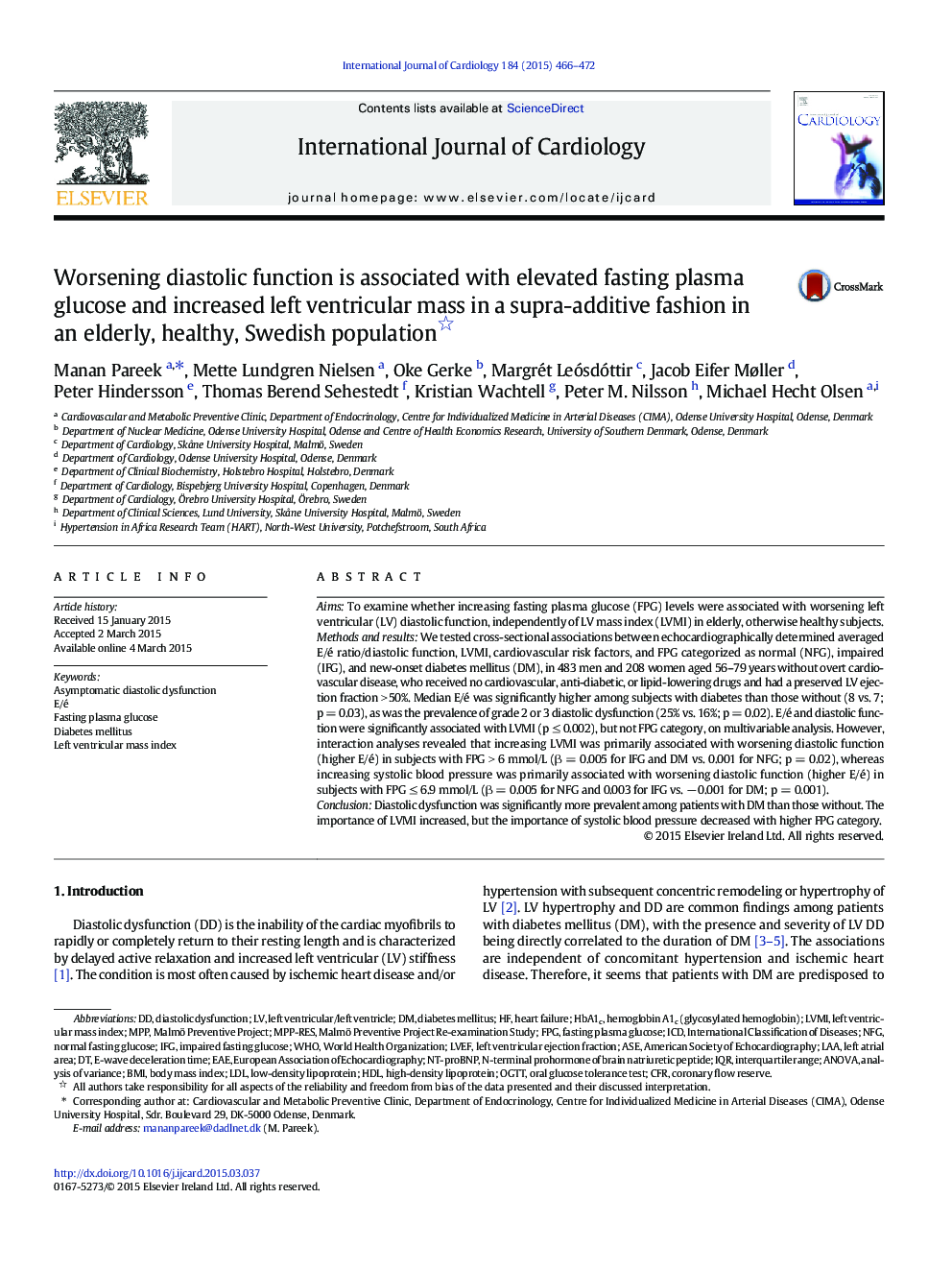| Article ID | Journal | Published Year | Pages | File Type |
|---|---|---|---|---|
| 5968370 | International Journal of Cardiology | 2015 | 7 Pages |
AimsTo examine whether increasing fasting plasma glucose (FPG) levels were associated with worsening left ventricular (LV) diastolic function, independently of LV mass index (LVMI) in elderly, otherwise healthy subjects.Methods and resultsWe tested cross-sectional associations between echocardiographically determined averaged E/é ratio/diastolic function, LVMI, cardiovascular risk factors, and FPG categorized as normal (NFG), impaired (IFG), and new-onset diabetes mellitus (DM), in 483 men and 208 women aged 56-79 years without overt cardiovascular disease, who received no cardiovascular, anti-diabetic, or lipid-lowering drugs and had a preserved LV ejection fraction > 50%. Median E/é was significantly higher among subjects with diabetes than those without (8 vs. 7; p = 0.03), as was the prevalence of grade 2 or 3 diastolic dysfunction (25% vs. 16%; p = 0.02). E/é and diastolic function were significantly associated with LVMI (p â¤Â 0.002), but not FPG category, on multivariable analysis. However, interaction analyses revealed that increasing LVMI was primarily associated with worsening diastolic function (higher E/é) in subjects with FPG > 6 mmol/L (β = 0.005 for IFG and DM vs. 0.001 for NFG; p = 0.02), whereas increasing systolic blood pressure was primarily associated with worsening diastolic function (higher E/é) in subjects with FPG â¤Â 6.9 mmol/L (β = 0.005 for NFG and 0.003 for IFG vs. â 0.001 for DM; p = 0.001).ConclusionDiastolic dysfunction was significantly more prevalent among patients with DM than those without. The importance of LVMI increased, but the importance of systolic blood pressure decreased with higher FPG category.
